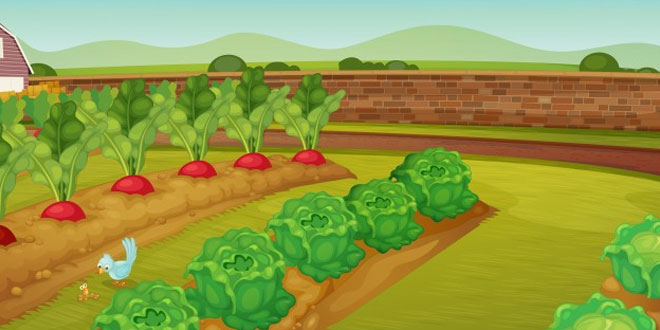Question: What were the main causes for the enclosure of lands?
Answer: Unlike the sixteenth-century enclosures that promoted sheep farming, the land being enclosed in the late eighteenth century was for grain production.
The new enclosures were happening in a different context; they became a sign of a changing time.
From the mid-eighteenth century, the English population expanded rapidly. Between 1750 and 1900, it multiplied over four times, mounting from 7 million in 1750 to 21 million in 1850 and 30 million in 1900. This meant an increased demand for food grains to feed the population.
Moreover, Britain at this time was industrializing. More and more people began to live and work in urban areas. Men from rural areas migrated to towns in search of jobs. To survive they had to buy food grains in the market. As the urban population grew, the market for food grains expanded, and when demand increased rapidly, food grain prices rose.
By the end of the eighteenth century, France was at war with England. This disrupted trade and the import of food grains from Europe. Prices of food grains in England sky rocketed, encouraging landowners to enclose lands and enlarge the area under grain cultivation. Profits flowed in and landowners pressurized the Parliament to pass the Enclosure Acts.
Question: Comment on the food grain production in the nineteenth century in England.
Answer: Food-grain production in the past had not expanded as rapidly as the population. In the nineteenth century this did not happen in England. Grain production grew as quickly as population. Even though the population increased rapidly, in 1868 England was producing about 80 per cent of the food it consumed. The rest was imported.
This increase in food-grain production was made possible not by any radical innovations in agricultural technology, but by bringing new lands under cultivation. Landlords sliced up pastureland, carved up open fields, cut up forest commons, took over marshes, and turned larger and larger areas into agricultural fields.
Farmers at this time continued to use the simple innovations in agriculture that had become common by the early eighteenth century. It was in about the 1660s that farmers in many parts of England began growing turnip and clover. They soon discovered that planting these crops improved the soil and made it more fertile.
Turnip was, moreover, a good fodder crop relished by cattle. So farmers began cultivating turnips and clover regularly. These crops became part of the cropping system. Later findings showed that these crops had the capacity to increase the nitrogen content of the soil. Nitrogen was important for crop growth. Cultivation of the same soil over a few years depleted the nitrogen in the soil and reduced its fertility. By restoring nitrogen, turnip and clover made the soil fertile once again.
We find that farmers in the early nineteenth century used much the same method to improve agriculture on a more regular basis.
Enclosures were now seen as necessary to make long-term investments on land and plan crop rotations to improve the soil. Enclosures also allowed the richer landowners to expand the land under their control and produce more for the market.
Question: What were the effects of the enclosures on farmers?
Answer: Enclosures filled the pockets of landlords. But the farmers who depended on the open fields and commons suffered drastically. When fences came up, the enclosed land became the exclusive property of one landowner. The poor could no longer collect their firewood from the forests, or graze their cattle on the commons. They could no longer collect apples and berries, or hunt small animals for meat. Nor could they gather the stalks that lay on the fields after the crops were cut. Everything belonged to the landlords, everything had a price which the poor could not afford to pay.
In places where enclosures happened on an extensive scale – particularly the Midlands and the counties around – the poor were displaced from the land. They found their customary rights gradually disappearing. Deprived of their rights and driven off the land, they tramped in search of work. From the Midlands, they moved to the southern counties of England. This was a region that was most intensively cultivated, and there was a great demand for agricultural laborers. But nowhere could the poor find secure jobs.
Earlier, it was common for laborers to live with landowners. They ate at the master’s table, and helped their master through the year, doing a variety of odd jobs. By 1800 this practice was disappearing. Laborers were being paid wages and employed only during harvest time. As landowners tried to increase their profits, they cut the amount they had to spend on their workmen. Work became insecure, employment uncertain, income unstable. For a very large part of the year the poor had no work.
Question: What was the scenario in USA at the time of common fields in England?
Answer: At the time that common fields were being enclosed in England at the end of the eighteenth century, settled agriculture had not developed on any extensive scale in the USA. Forests covered over 800 million acres and grasslands 600 million acres.
Most of the landscape was not under the control of white Americans.
Till the 1780s, white American settlements were confined to a small narrow strip of coastal land in the east. Several of them were nomadic, some were settled.
Many of them lived only by hunting, gathering and fishing; others cultivated corn, beans, tobacco and pumpkin. Still others were expert trappers through whom European traders had secured their supplies of beaver fur since the sixteenth century.
 Class Notes NCERT Solutions for CBSE Students
Class Notes NCERT Solutions for CBSE Students



